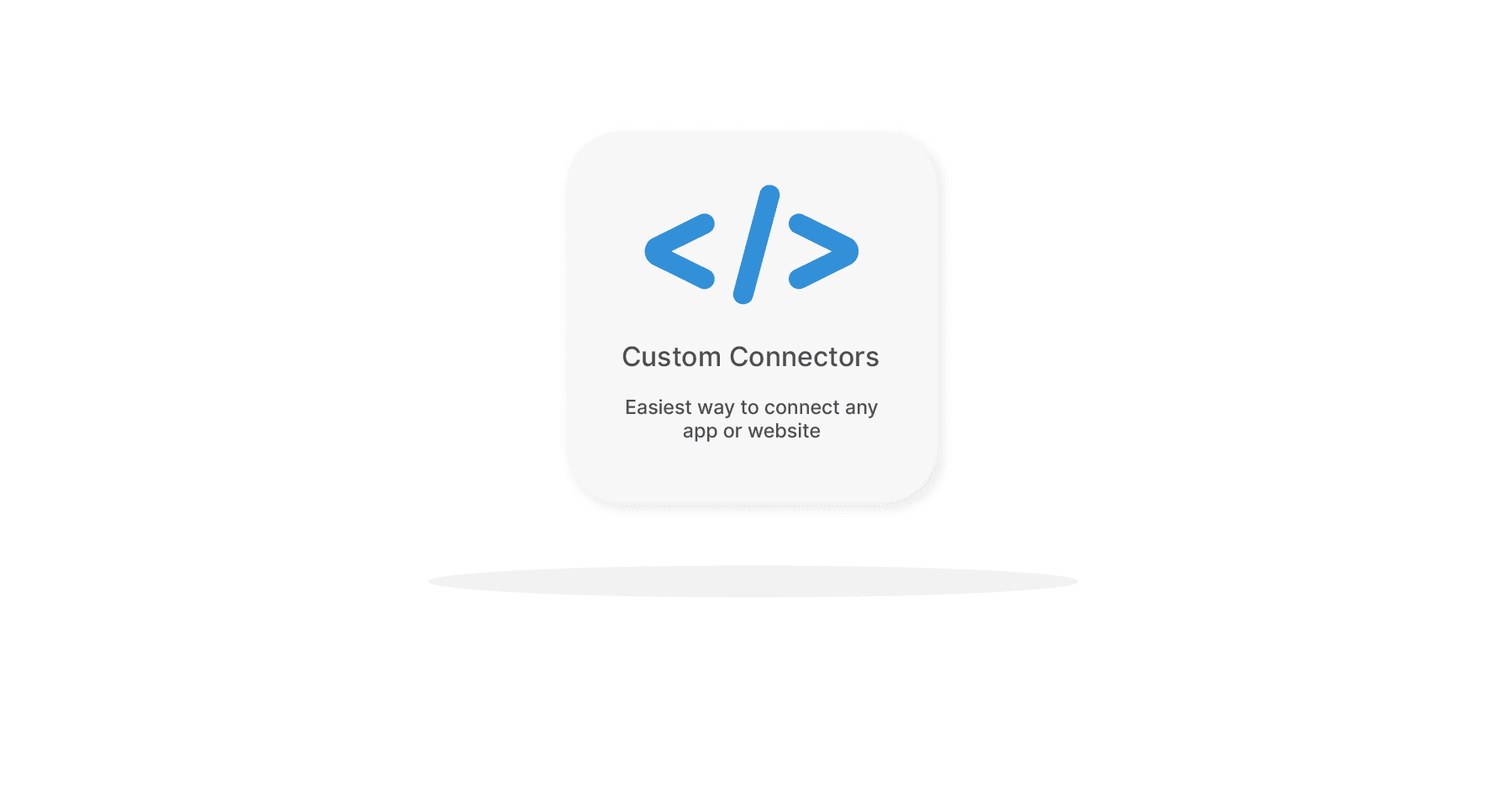
Custom connectors are utilised similarly to prebuilt connectors which have a range of end-points and methods. To utilise the connection and access the operations within your custom connector, you must first establish a connection to your API.
In other words, a connector is a wrapper around an API. This wrapper makes it easy for low-code developers to take actions and trigger workflows.
Why would you build a custom connector?
So, why would you want to build a custom connector? We can think of a couple of reasons.
Firstly, the API exists, but the connector doesn’t and you need to work with the API. Secondly, the connector exists, but it’s not perfect and you need it to be customised or a completed version. Thirdly, the API is being built by you and you want to build a connector in parallel, to drive usage.
Ultimately, you want to build a custom connector to tackle some of your fringe use cases. Pre-built connectors are great for common and widely used cases but can fall short when it comes to niche needs. This could be handling unconventional file structures or connecting unique data sources.
Cyclr has a library of 500+ pre-built connectors and we’ve made it possible for you to create custom connectors as well. These connectors are private to your organisation and only usable by you!
How to create custom connectors
We have built a dedicated Connector Creation Toolkit that enables you to build your own. The beauty of the toolkit is that it standardises the approach to building them and you can also build connectors through specification, setting the necessary parameters and methods required in a form-based layout.
With this toolkit, you can:
- Connect to any system.
- Build by specification.
- Generate connectors from OpenAPI specification.
- Support for a wide range of Authentication types built-in.
If the API in question has an OpenAPI specification, the process can be eased further using our automatic Connector generator.
If you have an OpenAPI (Swagger) specification for your required application available, Cyclr can ease the creation process by importing it to generate the basis of a new custom connector.
Just select or point to your file, make any customisations to your connector and then publish so you can begin to build integrations with it in our low-code integration builder.
Follow our Connector Standards Guide to Create Custom Connectors
We’d advise following some connector standards for consistency. We’ve put together a guide you can follow to base your connector configuration on.
Connector Details
- The name should not include any version information.
- The version should be the same as the API version.
- We find that the description should be from the product, a Google search result will likely give appropriate text.
- The connector logo should be 400×400 and scale down nicely.
- Connectors should only use 1 API version.
Authentication
- We advise and encourage the use OAuth where available.
Methods
Naming Convention:
- Get: Used when the method retrieves a single item.
- List: Used when the method retrieves multiple items.
- Create: Used when the method creates an item (Do not use add).
- Delete: Used when the method deletes an item.
- Update: Used when the method updates an item.
Note: When an endpoint carries out multiple functions, such as Creating or Updating, name the method logically e.g. “Create Or Update Contact”.
Descriptions:
- Descriptions should be provided and end with a “.”
Functionality
- All entities should include methods for Get, Get New, Get Updated, List, Create, Update, and Delete unless not supported by the API.
Fields & Parameters
- Descriptions should end in “.”
- You should provide lookups/triggers for IDs where possible.
- IDs should be descriptive of the method rather than generic. e.g. “Contact ID” rather than “ID”.
System Fields
- These should be in PascalCase e.g. “AddressLine1”.
- IDs should follow PascalCase e.g. “Id”.
- You should be consistent with our naming convention rather than with the API.
Display Names
- Each word should be separated with space and capitalised e.g. “Address Line 1”.
- IDs should be uppercase e.g. “ID”.
The tool kit also manages releases, so you can work on enhancing your connector while a version is live, promoting it only when you are ready.
You can find more information about building your own Connectors in our Documentation and when you’ve purchased Cyclr you’ll have access to our Community Site. This has tonnes of tutorials and other resources to help you maximise your use of Cyclr.
Want someone else to build a Connector for you?
If you don’t have the resources to build your own connectors we have a dedicated Connector team who will build and maintain Connectors for you. If you need a specific connector built for an application we can deliver it to you as a service.
We build the Connector based on your particular use case to ensure the cost and delivery times are kept low, as well as ensuring it is kept up to date as the systems you connect to evolve.
Our Connector creation toolkit is subject to the pricing plan chosen when purchasing Cyclr, for more information check out our pricing options.
If you’d like to learn more about Connectors and Cyclr speak to a member of our team.